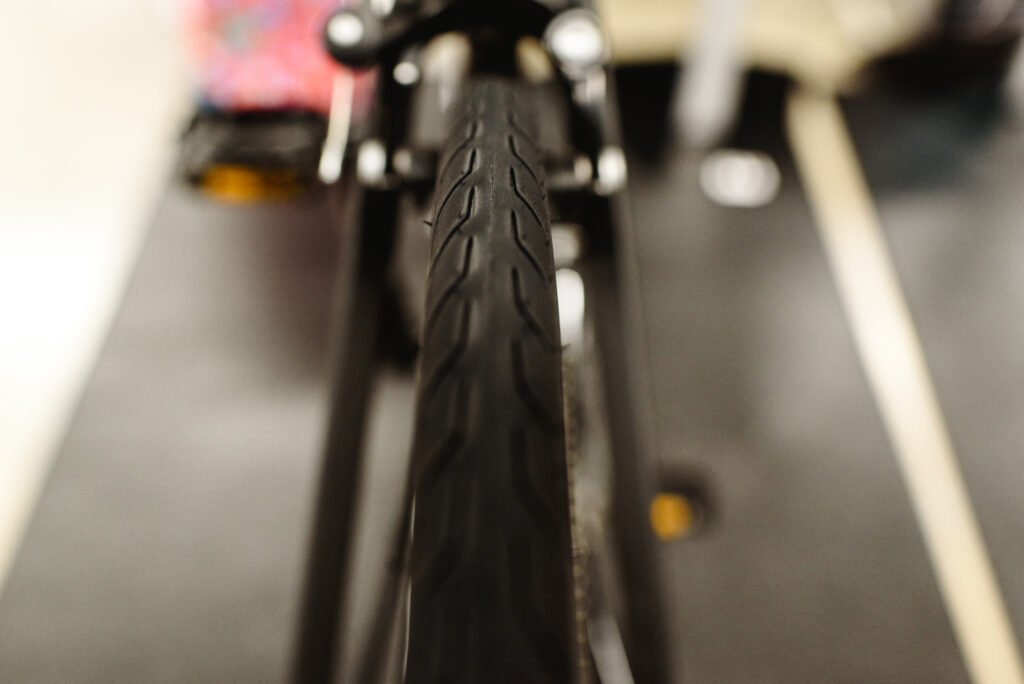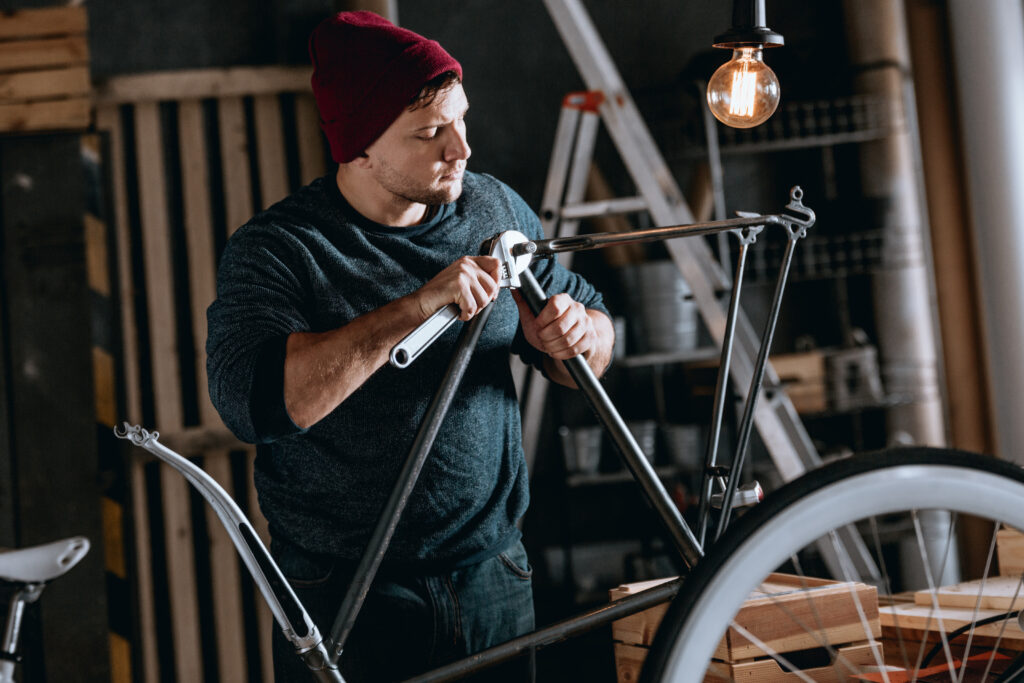Making sure your flat bar road bike is the right size for you is not just about looking good – it’s about making sure it’s comfortable and safe to ride. The size of your bike has a big impact on how you feel, how well you control your bike, and how much fun you have.
If you’re not properly sized, you can end up with a bike that’s uncomfortable, slow, or even dangerous. But if you’re right, you won’t have to worry about any of that. In this article, we’ll show you how to pick the right flat bar road bike size for you. We’ll go over the main things to consider and what should be at the top of your list.
Understanding the Basics of Bike Sizing
The importance of bike sizing cannot be overstated. When searching for the perfect flat bar road bike, understanding the details of frame size, standover height and reach is essential. These elements form the foundation of a comfortable and secure riding experience.

Each component has its own unique role in customizing the bike to fit the body, guaranteeing that the two-wheel companion fits snugly. By delving into these essential elements, riders will gain the knowledge they need to make an educated decision about the ideal fit for their flat bar road bicycle. As we move forward, we will examine each of these essential elements, examining them to uncover how they shape the riding experience and create a ride that is both enjoyable and secure.
The Importance of Proper Frame Sizing
The frame of a flat bar road bicycle is not only its structure, but it is also the core of the cycling experience. Therefore, when it comes to selecting the correct frame size, accuracy is essential. This article will provide an in-depth analysis of why proper frame size is a must-have when selecting a bike. If the frame is too small, it is like wearing shoes that are too tight.
This can lead to a variety of issues. For example, if the bike is too large, the rider may find themselves in an awkward riding position, resulting in unnecessary strain on the back, neck, or arms. Additionally, the rider’s knees may feel cramped as they pedal, leading to an inefficient power transfer into the pedals. This can result in discomfort and a decrease in pedalling efficiency. On the other hand, if the frame is too large, it can be a source of discomfort and can affect the rider’s ability to steer.
Standover Height and Inseam Measurement
Standover height is often overlooked, but it’s an important factor in bike sizing. It’s not just a measurement, it’s about creating a safe and comfortable experience on the road. The space between the bike’s top tube and the body when you’re standing over it is called the standover height. It may seem like a small detail, but it can make all the difference.
You want to make sure you have just the right amount of space. Too little space means you’ll be uncomfortable straddling the bike, and you could end up in an accident. Measurement of the inseam is a key part of determining the correct standover height. This is the length of your inseam from your knee to the floor. We’ll walk you through the process of measuring your inseam to make sure you’re getting the right measurement. When you get the right inseam measurement, you’ll have a safer and more comfortable riding experience. You’ll be able to place your feet down smoothly and securely on the bike when you need to.
Reach and Handlebar Considerations
Reach is the distance between the saddle and the handlebars. It’s important to know how to measure it and how it affects your posture. A good reach means you won’t be stretched out or cramped while cycling. It also means you’ll be in an ergonomic position and won’t put strain on your spine, neck, or arms. There are different types of handlebars and they come in different widths.

Whether it’s a flat one, a drop one, or a riser one, it all depends on your riding position and what kind of terrain you’re tackling. The width of the handlebars affects how much control and stability you have, so it’s essential to choose the one that fits your shoulders and how you like to ride. As a cyclist, you’ll need to how to adjust your reach & handlebars to suit your preferences. It isn’t just about numbers; it’s about finding the right balance between control & comfort.
Testing and Adjusting Your Bike
It’s important to take the bike out for a test ride before committing to a specific size. This step is essential to determine if the bike’s size matches your riding style and preferences. You’ll get a first-hand feel for how the bike fits and performs, which is a great way to make an educated decision. As soon as you hop on, pay attention to how comfortable the bike feels. Make sure the reach to the handles is just right for a comfortable and efficient riding stance. Check the saddle height to make sure it matches your pedalling style for the most comfortable and efficient stroke.
In addition to comfort, you’ll want to know how well the bike handles in different situations. Take the bike through turns, climbs and descents to see how responsive and stable it is. The bike should give you confidence in its control and handling. It’s also important to test the braking and shifting mechanisms to ensure they work smoothly for a safe and comfortable ride. While you’re out on the test ride, keep an eye out for any minor adjustments that could improve your bike’s fit. This could include adjusting the saddle height, adjusting the handlebar positioning, changing the stem.
Finding Your Perfect Fit
The search for the perfect flat bar road bike size has provided a wealth of information regarding frame sizing and standover height, these factors are essential for a comfortable, precise, and secure riding experience. Frame size is the fundamental factor that aligns the rider’s body to the bike, guaranteeing comfort and efficiency. Standover height is a key factor in ensuring ease and safety when mounted and dismounted.
By mastering it, riders can reduce the risk of uncomfortable, potentially hazardous situations. The subtler dimension and reach of the standover height have a direct impact on posture and comfort during riding. Test rides are the ultimate confirmation of theoretical knowledge, enabling riders to feel how their bike fits their body and individual riding style. It is important to note that there is no one-size-fits-all ideal fit, as each rider is unique. With the advice provided, cyclists can embark on their cycling adventures with confidence, knowing that each pedal and turn is precisely placed on the handlebars.
